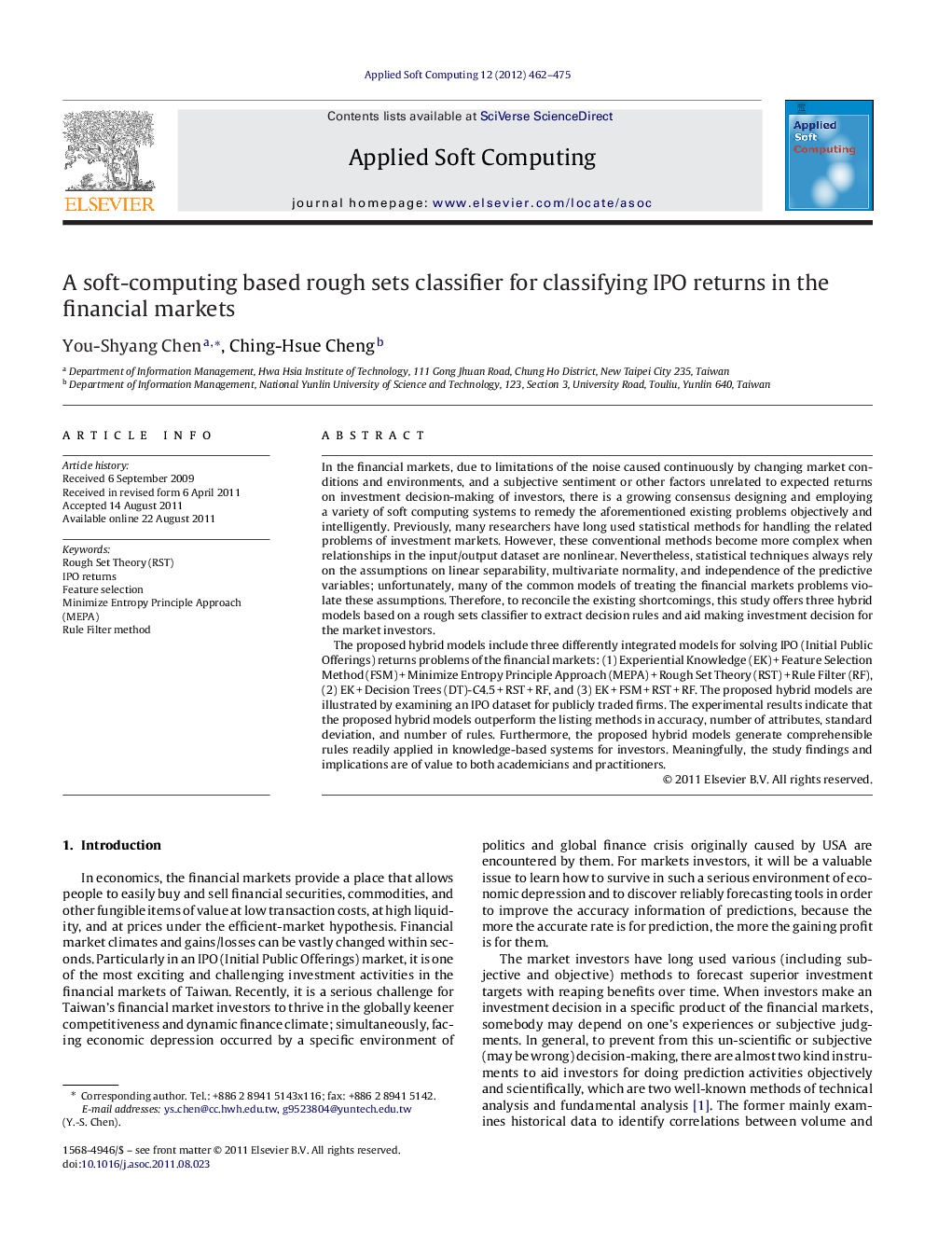| کد مقاله | کد نشریه | سال انتشار | مقاله انگلیسی | نسخه تمام متن |
|---|---|---|---|---|
| 496193 | 862851 | 2012 | 14 صفحه PDF | دانلود رایگان |

In the financial markets, due to limitations of the noise caused continuously by changing market conditions and environments, and a subjective sentiment or other factors unrelated to expected returns on investment decision-making of investors, there is a growing consensus designing and employing a variety of soft computing systems to remedy the aforementioned existing problems objectively and intelligently. Previously, many researchers have long used statistical methods for handling the related problems of investment markets. However, these conventional methods become more complex when relationships in the input/output dataset are nonlinear. Nevertheless, statistical techniques always rely on the assumptions on linear separability, multivariate normality, and independence of the predictive variables; unfortunately, many of the common models of treating the financial markets problems violate these assumptions. Therefore, to reconcile the existing shortcomings, this study offers three hybrid models based on a rough sets classifier to extract decision rules and aid making investment decision for the market investors.The proposed hybrid models include three differently integrated models for solving IPO (Initial Public Offerings) returns problems of the financial markets: (1) Experiential Knowledge (EK) + Feature Selection Method (FSM) + Minimize Entropy Principle Approach (MEPA) + Rough Set Theory (RST) + Rule Filter (RF), (2) EK + Decision Trees (DT)-C4.5 + RST + RF, and (3) EK + FSM + RST + RF. The proposed hybrid models are illustrated by examining an IPO dataset for publicly traded firms. The experimental results indicate that the proposed hybrid models outperform the listing methods in accuracy, number of attributes, standard deviation, and number of rules. Furthermore, the proposed hybrid models generate comprehensible rules readily applied in knowledge-based systems for investors. Meaningfully, the study findings and implications are of value to both academicians and practitioners.
This study proposes a set of hybrid models for forecasting IPO returns and determining the quality of a rough set classification system. The proposed hybrid models are constituted by various combinations of six components: experiential knowledge (EK), feature selection method (FSM), minimize entropy principle approach (MEPA), decision trees (DT) C4.5 algorithm, rule filter (RF), and rough set theory (RST), including (1) EK + FSM + MEPA + RST + RF (called Model A), (2) EK + DT-C4.5 + RST + RF (called Model B), and (3) EK + FSM + RST + RF (called Model C).Figure optionsDownload as PowerPoint slideHighlights
► The Feature Selection Method (FSM) discoveries core attributes, deletes redundant attributes, and further improves classification performance of rough sets classifiers.
► The Minimize Entropy Principle Approach (MEPA) demonstrates the good performance of rule-based classification.
► The Rule Filter (RF) is effective not only in improving the number of rules but also in lowering its standard deviation in the Initial Public Offerings (IPO) dataset.
► The hybrid models surpass stand-alone models, which can amplify the advantages of the individual models and minimize their limitations.
Journal: Applied Soft Computing - Volume 12, Issue 1, January 2012, Pages 462–475